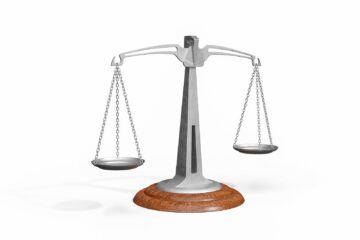![]()
Introduction:
The policy of reservation finds its basis from the oppressive caste system that existed in pre-independence India. People belonging to the lower castes like Dalits were treated as inferior and were not permitted in public places like temples, watersheds, etc. which were reserved for the higher castes. When members belonging to the so-called lower castes were socially discriminated against, it also interfered with their educational opportunities. This article explains the history of reservation in India with a special emphasis on the 103rd Constitutional amendment of 2019.
Article 14 of the Constitution provides for equal protection of laws. According to some people, reservation is a discrimination rather than a safeguard of rights. Contradictory to this, reservation is based on the policy of affirmative action and reverse discrimination. In order for the backward classes of the society to be raised to the level of equality, certain special measures have to be enacted for their aid. For example, building of a ramp in a school to facilitate commuting of a disabled person is not discrimination, instead, it raises the individual to the level of the others. Hence, affirmative action promotes equality with justice.
Article 15 of the Constitution states that no individual can be discriminated against on the basis on caste, sex, religion, place of birth and race.
First Step Towards Reservation in India
In 1950, the Madras government enacted a policy enabling reservation of seats in government engineering and medical colleges for Scheduled Castes (hereby SCs) and Scheduled Tribes (hereby STs).
This policy was challenged in the Supreme Court as the state was discriminating on caste thus violating Article 15 of the Constitution.
Champakam Dorairajan vs State of Madras 1951[1]
The Madras government in its defence stated that it had merely enforced Article 46 of the Constitution (a Directive Principle of State Policy) which states that the state shall take steps to protect the educational and economic interests of the people.
The Supreme Court stated that in the process of implementing DPSPs, fundamental rights of people were being violated and hence the Madras government order was unconstitutional.
This led to the 1st Constitutional amendment in 1951.
The parliament amended Article 15 of the Constitution to add an exception in Article 15(4)-
The state could make special provisions for the advancement of any socially and educationally backward classes or SCs and STs by restricting the application of fundamental rights.
Following this amendment, 20% reservation was enabled for SCs and STs in government colleges.
Article 16 of the Indian Constitution provides for equality in matters of public employment. An exception to this rule is Article 16(4) which states that the State can reserve seats for SCs and STs provided that they aren’t adequately represented in services under the state.
The Mandal Commission [2]
The Mandal Commission was formed under the Janata Party in 1979 under Prime Minister Morarji Desai. It was headed by B.P. Mandal, a Bihar politician. It was formed with the objective to identify the socially and economically backward people who did not constitute SCs and STs.
The committee gave its report in 1983. According to the report, 52% of the people in India excluding SCs and STs were socially and educationally backwards. It recommended a 27% reservation for these Other Backward Classes (hereby OBCs) in government jobs and educational institutions.
The then Prime Minister, V.P Singh tried to implement this report but failed due to widespread protests throughout the country.
In 1991, the Congress government headed by the Narasimha Rao decided to enlarge the reservation policy. They offered a 10% reservation to the economically weaker sections in the society.
This decision was challenged in the Supreme Courts in the now famous, Indra Sawhney vs Union of India case.
Indra Sawhney vs Union of India case 1992/ Mandal Case
Indra Sawhney filed a PIL in the Supreme Court questioning the validity of the report submitted by the Mandal Commission and its expansion done by the Congress government.
It was argued-
- The Mandal Commission based its report from the 1931 census which could not serve as a basis for identifying the backward classes in the country. To identify the OBCs, a separate survey had to be conducted.
- The provision for reservation for economically weaker sections was against Article 15(4) of the Constitution as the article provided the formation of policies only for the socially and educationally backward sections, not the economically weaker ones.
- Reservation found its basis in the caste system which may obstruct India’s mission to become a welfare state. If the reservation was continued it will replace standard with sub-standard and meritocracy with mediocrity.
It was felt that the report was trying to rewrite the Constitution.
A nine-judge bench, in this case, ruled that any reservation policy in favour of backward classes would have to satisfy 5 constitutional requirements-
- The section of society is socially/ educationally backward
- The section is not appropriately represented in public employment
- Any reservation in totality could not exceed 50% of the population
- The overall efficiency of the administration should not be affected as required under Article 335 (subjective clause) of the Constitution.
- Reservation can only be provided at the entry-level i.e at the time of recruitment and not promotions.
Other points of the judgement-
- The concept of creamy layer was applicable to OBCs
- Article 16(4) was an enabling provision.
In its judgement, the 27% reservation for OBCs was kept, but the reservation for economically weaker sections was declared unconstitutional.
The reservation was fixed in 1982 as 15% for SCs and 7.5% for STs. 27% reservation for OBCs was added in this criteria thereby making the total as 49.5% which was below the 50% limit set by the apex court.
77th Constitutional Amendment 1995
Article 16(4A) was inserted by the 77th Constitutional amendment. It provided reservation in promotion of those who belonged to SCs and STs.
M. Nagraj v/s Union of India 2006[3]
The 77th constitutional amendment was challenged in this case. The Supreme Courts ruled that reservation in promotion for SCs and STs was constitutional as long as it didn’t interfere with Article 335 of the Constitution (as mentioned earlier).
Article 15(5) was added by the 93rd amendment in 2005. It confers upon the state to reserve seats in favour of socially and educationally backward classes in both, unaided and aided educational institutions ( excluding minority institutions).
103rd Constitutional Amendment Act 2019
It amended Article 15 and article 16 by adding 15(6) and 16(6). The amendment introduces 10% reservation to central government-run educational institutions and private institutions (except minority institutions), and government jobs for the economically weaker sections (hereby EWS) of the society. There is no such provision of reservation in institutions run by the state government.
Criteria to decide who constitute the economically weaker sections-
- The quota can be availed by persons with annual gross household income up to ₹8 lakh
- Families that own less than 5 acres of agricultural land
- House less than 1000 sq. ft.
- A plot of less than 100 yards notified under municipal area or less than 200 yards plot in a non-notified municipal area
People belonging to SCs, STs and the creamy layer of OBCs cannot avail this reservation for the EWS.
Many petitions have been filed in the apex court challenging the constitutionality of the 103rd amendment. Their arguments include-
- Reservations made on economic criteria violates the judgement given in the Indira Sawhney v/s Union of India 1992 case.
- Exclusion of SCs, STs and OBCs from the reservation violated the fundamental right to equality.
- The 10% increase in reservations sums the total reservation at 59.5%, which is above the 50% criteria set in the Mandal case.
- On one hand, families with annual income less than ₹8 lakh are eligible for reservation but at the same time, 20% income tax is imposed on them. These points are contradictory.
On 5th August 2019, the apex court referred this case to a five-judge bench. The judgement is still due.
Supporters of the amendment argue that it is a religion-neutral reservation which reduces the stigma around reservation as it is applicable to a significant part of the population. Also, the main reason why people can’t avail education in India is because of poverty. They are unable to pay the school/college fees. So, this reservation would create a direct impact on society and improve the condition of poverty significantly.
Other Policies for Welfare of EWS
- The Interest Subsidy for Housing the Urban Poor Scheme (ISHUP) was formed to provide loan facilities to the poor at lower rates of interests than the general public, that would be well within their repaying capacity.
- The Pradhan Mantri Awaz Yojna was initiated to build affordable housing for all the urban poor sections of the society by 2022.
- Under the Right of Children to Free and Compulsory Education Act, 2009, a child whose parents’ annual income is lower than limit given will be provided with 25% reservation in seat allotments (Delhi) with other requirements.
- The system of Public Distribution System was initiated for the benefit of the EWS.
- A criterion has been set by the government on the basis of which a portion of the EWS are eligible to avail free treatment from the hospitals.
Conclusion
The reservation was introduced in India with the main aim to reverse caste injustices. Over the span of 70 years, we still have the need to provide reservations to some communities. However, increasing the criteria does not only question the originality but also the emphasis of reservations. The victims of this policy are the general public. Moreover, setting income as a criterion for reservation is highly inconsistent as the income fluctuates with time.
Instead of providing reservations to the EWS, they should be helped in other ways like the provision of scholarships. The root cause of the problem needs to be addressed instead of solving it only at the top level.
“I don’t believe in reservation, casteism or colour. If I have the ability to touch the sky, I will.”
-Laxmi Narayan Tripathi
[1] Champakam Dorairajan v/s State of Madras, (1951) 1951 SCR 525
[2] Revathi Krishnan, 30 years since Mandal Commission recommendations — how it began and its impact today, 7 August, 2020 8:03 pm IST, https://theprint.in/theprint-essential/30-years-since-mandal-commission-recommendations-how-it-began-and-its-impact-today/477260/
[3] M.Nagaraj & Others vs Union of India & Others on 19 October, 2006, https://indiankanoon.org/doc/102852/



0 Comments